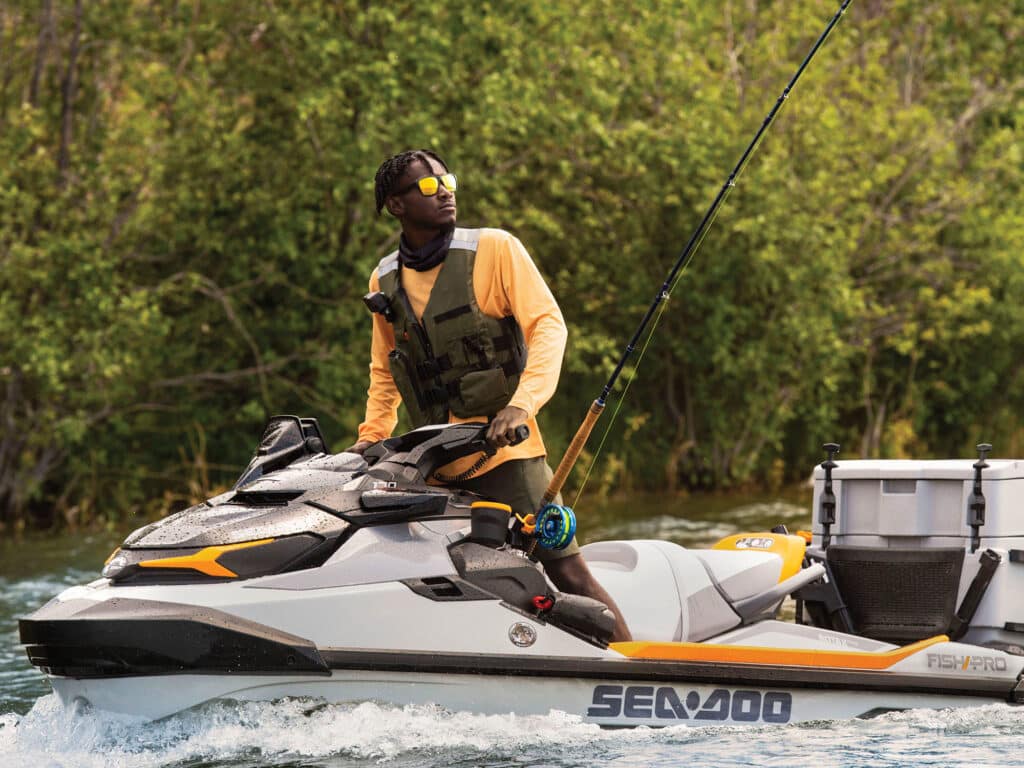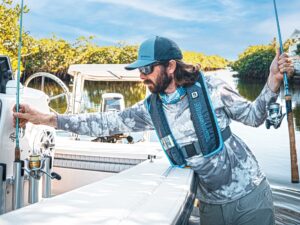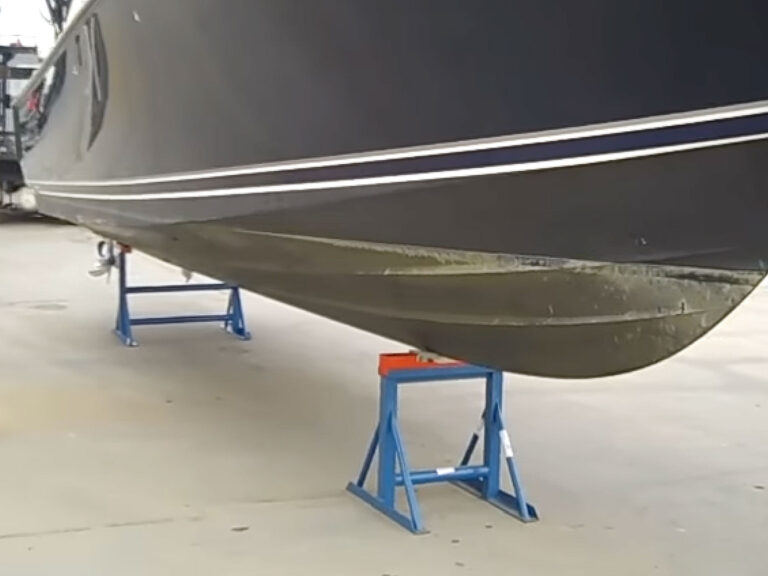
Wearing a life jacket is a smart choice for any boater but mandatory for all personal watercraft riders. Coast Guard-approved Type III models work best. The vest-style design is easy to take on and off, comfortable, and available in a wide variety of colors and graphic patterns. But while a basic Type III life jacket will always do the job, the latest crop of PWC-specific models do it better, tailoring design and features to the way individual riders use their craft. Here’s how they compare.
Recreational
The average recreational rider will be well-served by the classic ski vest, a sleeveless, front-entry design that closes with buckled straps or a straps-and-zipper combo. A nylon or neoprene exterior typically covers flotation foam for comfort and to protect the foam from wear and sun exposure. Nylon is affordable, dries quickly, and is the cooler of the materials in the hot summer months. Because neoprene is more form-fitting, it often has a more comfortable fit, but it’s also slightly more expensive and can feel warmer on hotter days. Lighter shades of neoprene are also more prone to staining from sunscreen. Extras? A D-ring sewn into the front bottom of the vest is a great place to attach clip-style engine-cutoff safety lanyards.
Performance
Vests designed for performance-minded riders often trade a front closure for a side-entry design that maintains uninterrupted protection across the front of the vest to protect the torso from impact, whether with the handlebars, other parts of the craft, or even the water in a high-speed fall. Closures are likewise moved to the side of the vest. Armholes are typically cut wider to allow for greater arm and shoulder flexibility. Segmented or hinged flotation blocks, thicker at the vest’s front, enhance the vest’s protection and flexibility. Straps are tucked below a layer of material across the front panel to prevent snagging on the handlebars or controls.
Read Next: Personal Watercraft Handling and Control Gets More Responsive
Touring and Fishing
Long-distance touring riders or those taking a PWC into remote locations don’t necessarily require a different style of life jacket as much as one that can hold more stuff. Look for numerous pockets at the front of the vest to keep items like a handheld VHF radio, whistle, your phone and other gear handy. Some models even feature mounts for a GoPro-style action camera to relive your adventures later. Look for segmented foam to conform more to your body and offer greater comfort during extended hours in the saddle. Larger armholes will likewise offer more freedom of movement and less potential for chafing. A simple loop at the back of the neck area will anchor goggles or sunglasses straps to prevent loss while underway.
Size Matters
Avoid a one-size-fits-most solution. Life jackets should be sized to the rider so that they offer the necessary buoyancy and won’t slip over the head. Close all buckles and zippers, making sure the entry point of the vest comes together without significant gaps or overlaps. Before taking to the water, perform a fit check by raising your arms overhead and having another person grasp the jacket at the shoulders and lift upward. A properly sized vest should not rise over the face or slip over your head.








